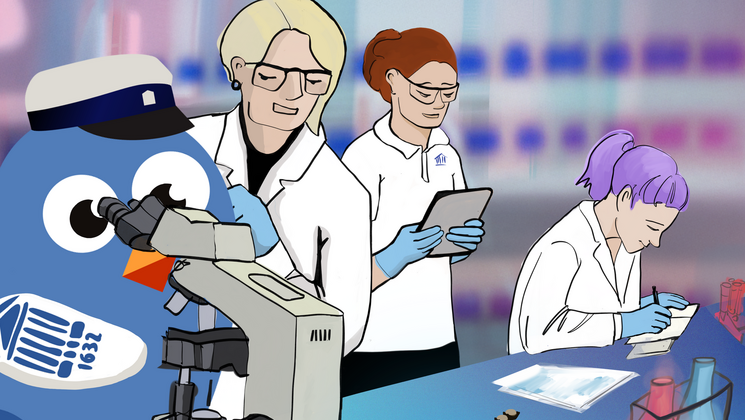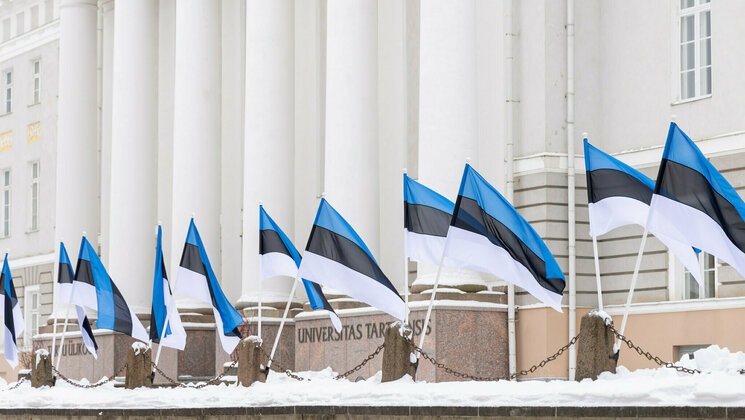Rector: Estonia's notional centre must be shifted to north-eastern Estonia in the coming years
Ceremony marking the 104th anniversary of Estonia’s national university in the UT assembly hall on 1 December 2023.
Toomas Asser:
Dear members of the university family
Dear new doctoral graduates
Distinguished honorary doctors
Dear guests
I congratulate you on the anniversary of the founding of the Estonian-speaking university.
104 years ago, the University of Tartu of the Republic of Estonia was opened here in this assembly hall, the chamber of representatives of sciences. Those who prepared for the opening and later led the university emphasised that it was the Estonian university in Tartu. Thus, this day has been engraved in the history of the University of Tartu and Estonia with the responsibility, as Estonia’s national university, to be the university of the entire Estonia. This is the academic parliament of Estonia here.
We have the mission to develop the national sciences. We have the obligation to preserve our language and culture. As Estonia’s national university, however, we also have the daily task of keeping the balance between the different sides, and ensure that
- our worthy traditions are preserved, while no necessary innovation remains undone;
- the university is coherent and united in its activities and identity, but the individuality and especially the autonomy of its units and disciplines is not stifled thereby;
- research integrity frameworks and data protection are perceived as the most important issues, while at the same time, learning and decision-making remain human and people-oriented;
- the range of curricula and research directions is diverse as appropriate for the universitas, but the weight of the individual parts does not remain mediocre and undersized;
- we have cutting-edge results in fundamental sciences, but entrepreneurship and applied sciences are not left in the background;
- learning opportunities are flexible, but being a full-time student is the first choice for young people.
This list is really just a small part of the so-called checklist for preserving the national university. I will not tire, however, of repeating that a prerequisite for developing the national university, and Estonia with it, is that the University of Tartu is, above all, an international university, especially now that countries are facing common challenges to solve in democracy, demography, energy, security, the environment, and various other fields.
When we speak about the University of Tartu’s responsibilities within Estonia, we would like to think of the whole territory of Estonia, the small area that we should know as our own backyard. But do we? What has changed compared to the time 45 years ago when Hando Runnel wrote, We were driving towards Narva / and on our left was Kunda. / It is so hard for a person / to still recognise Estonia?
If you look at the Government Office’s survey results reflecting the Estonian population’s satisfaction with life, economic security and trust in the state, it is not surprising that the results from north-eastern Estonia are like a negative image compared to the rest of the country. This region was one of the triggers of the national awakening in the 1980s. After a period of inactivity, the national university and the government need to focus their attention there again so that we would be able to recognise Estonia again. The tasks that need addressing are, in fact, similar throughout Estonia but are particularly acute in Ida-Viru county. If we can manage the major changes there, we can cope with them also in the rest of Estonia. In the coming years, therefore, Estonia’s notional centre of gravity, in terms of economy, foreign policy, democracy and security, must be shifted to north-eastern Estonia.
Around 500 million euros from the Just Transition Fund and partly from Estonia’s own state budget have been earmarked for supporting the turnaround of Ida-Viru county. If only this money will be used wisely! It must be used to create new opportunities for the region’s development and give locals a very clear perspective for the future. Universities have a role to play here: the University of Tartu, together with Tallinn University of Technology, has set up a consortium of researchers working on the introduction of new materials, renewable energy and digitalisation, but also on preventing the socioeconomic injustice involved in the Great Transition specifically in Ida-Viru county.
Creating a secure future for Ida-Viru county, however – just like the Green Transition and the transition to Estonian-language education in the whole of Estonia – requires decisiveness and the courage to act from the state. Wherever the people affected by big changes live, Ida-Viru county, Nursipalu or Metsküla, we must start by listening to the locals – I underline it once again – listening to the locals so as to match their human concerns, expectations and vision of the future with what is actually possible and necessary. Birute Klaas-Lang, Professor of Estonian at the University of Tartu, has spent the last year researching the reasons why parents with different mother tongues are opposing the transition to Estonian-language education. She has had to face the parents’ aggression and anger, listen to accusations of discrimination against minorities, and violation of human rights. But she has also encountered gratitude: gratitude that at last, there is someone talking to them, involving them, listening to them. This way, it is possible to give people hope and expect them to be open-minded and engaged in the decisions that affect them. This is exactly what President Alar Karis recently said after meeting the Ida-Viru development leaders.
Estonian people, and particularly the people of Ida-Viru county, need to know the vision of Estonia’s future. What should Ida-Viru county, sustainable Estonia or the Estonian-language education system be like in 20 years, for example? Today, the ambassador of Ukraine is with us celebrating the anniversary of Estonia’s national university here in this assembly hall. Therefore, I dare broaden Estonia’s vision of the future and express hope that if Estonia finds new workable solutions for our country, Ukraine will also be able to use them in future to build their democratic state.
Today, the university’s assembly hall is filled with new doctoral graduates, our new alumni. I therefore take the chance and underline that all of the above offers you as graduates a historic opportunity to be an active participant in the next Great Transition. Whether you apply your knowledge in a new professional role or as a researcher or lecturer at the university in Tartu, you will definitely help extend the reach of the national university.
When Professor Lawrence Bacow, the recent President of Harvard University, discussed what accounts for Harvard’s extraordinary reputation, he cited as its reason the alumni – the people who call Harvard University home and who have high hopes, aspirations and the drive to make the world a better place. He listed examples of the depth and reach of Harvard’s influence – from writing the Declaration of Independence to developing Covid vaccines, from Silicon Valley to the most successful artists on Spotify. Just name an area of life, and you will find a Harvard alum at the top of it. The University of Tartu, if you allow the comparison, is Estonia’s own Harvard. We need to recognise and appreciate the weight of our alumni as well as Harvard does. I believe that this will give us an immeasurable return.
At today’s ceremony, we have again an opportunity to extend the reach of the University of Tartu. Exactly a week ago, we presented the university’s honorary decorations to 94 members of the university and partners; today, we are conferring 135 doctorates and four honorary doctorates and presenting the “Contribution to Estonian national identity” award. The University of Tartu is like an almost 400-year-old tree whose crown expands with the addition of each of our alumni, each honorary doctor, each bearer of the national identity, and each of our good cooperation and business partners. We have to know how to cherish the branches that spread densely across Estonia but also very much farther across the world.
Thank you sincerely!
Long live Estonia’s national university!




